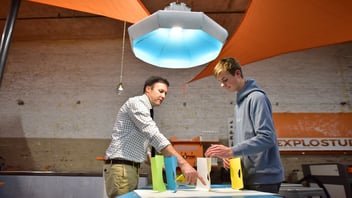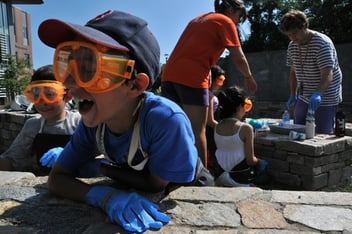Get Up, Stand Up—At Your Desk!

Standing up to work—whether at home, at the office, or at school—is all the rage these days. And for good reason. Schools across the country are testing out standing desks in their classrooms, and students are reaping the benefits physically and mentally.
Featured as a segment on the Today Show this fall, standing desks are associated with greater alertness and engagement in class and higher scores on standardized tests. Some schools that have implemented standing desks have seen test scores increase by as much as 10-15%.
Students today are asked to sit still a lot more than ever before and are deteriorating—in body and mind—as a result. Angela Hanscom, a pediatric occupational therapist and the founder of TimberNook, a nature-based development program, studies this lack of movement and sees the problem in action. “Children [desperately need to move their bodies] in order to turn their brains on,” she says.
Hanscom points out that kids are spending so much time in a still state—sitting upright—that they “are walking around with vastly underdeveloped vestibular systems.” Additionally, many students are scolded for an inability to sit still, leading to issues of self-esteem.
Today’s demands of school life leave much less time for unstructured play, both during the school day and at home. Recess is shorter, and in some places non-existent, and even after homework is complete, parents are often reluctant to allow their children to play freely outside.
Educators are starting to take notice of students’ need to move and are piloting standing desks as well as other potential solutions to this crisis of activity. Some ideas include sitting on exercise balls, using bike pedals underneath desks, and taking regular movement breaks.
Hanscom applauds these efforts but seeks larger scale change. “Children need authentic play experiences to get them moving in all directions,” she says. “Too many educators feel their hands are tied” when it comes to getting movement back into the lives of their students.
Perhaps standing desks are a good step in the right direction. What solutions have you found for your classrooms and homes?



